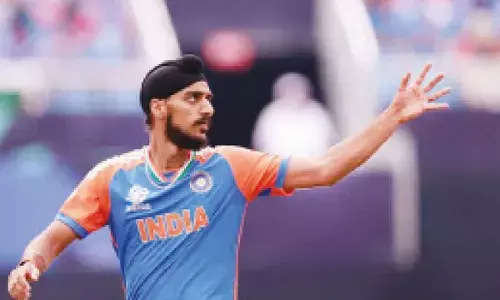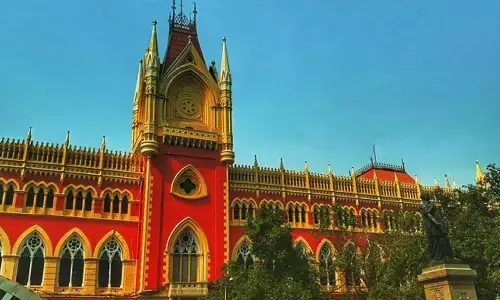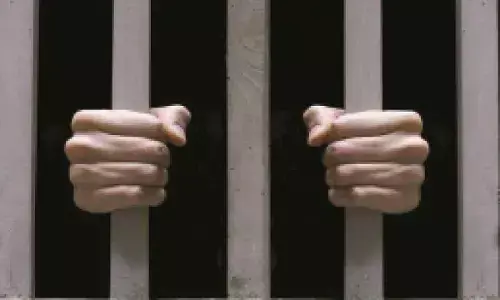Cinema ga cinema a Sensible Look at Cinema

Cinema ga cinema a Sensible Look at Cinema. The author is veteran Nandagopal, known for his knowledge of matters pertaining to Indian and International film and impartial outlook.
 The author is veteran Nandagopal, known for his knowledge of matters pertaining to Indian and International film and impartial outlook. A reading of this volume shows that he has been following the history of Cinema for decades and that he has thus an in-depth understanding of the various aspects of art and craft that go into the making of a film, by observation, interaction with eminent historians and creators (auteurs to be fashionable!), in person and through their writings.
The author is veteran Nandagopal, known for his knowledge of matters pertaining to Indian and International film and impartial outlook. A reading of this volume shows that he has been following the history of Cinema for decades and that he has thus an in-depth understanding of the various aspects of art and craft that go into the making of a film, by observation, interaction with eminent historians and creators (auteurs to be fashionable!), in person and through their writings.In fact, his essays are peppered with the sayings and opinions of many great minds involved with Cinema. This is not name-dropping to impress the gullible. Many names may not strike a chord in those who are not cineasts . A little rumination is required to reason out why that particular saying, of that particular artist/craftsman is quoted in that context. In all the cases I have checked (Yes, I too have had to check a few names in Halliwell’s ‘Who’s Who in the Movies’), at least a dozen, it proved that the quotation is pertinent.
There are 38 chapters, the first five dedicated to the art-form’s first steps, the moving image, the advent of the talkie, cinema the world over, cinema in India and the Telugu Cinema. The next 16 are about its various technical aspects. Of the remaining, some examine its relationship with others art-forms, drame, novel etc., documentaries, media, awards and others, that sustain, streamline and make the silver screen the art form of this age. That includes a trenchant look at sex, at its sordid and serious facets.
This review, for lack of space deals only with three sections with which this writer has some acquaintance, Lyrics, Music and Dance, which run to about twenty pages of carefully gathered information, sharp observation and thought-out opinion.
Song and dance together, have been a part of human civilisation. It is said that words and music of those who lift the water out of the river Nile in Egypt, are more than 4,000 years old. And India’s earliest Vaggeyakara, the composer of lyric and tune, was of course Valmiki, who wrote the Ramayana in metrical verse, tuned it and taught the sons of Sita, Lava and Kusa to sing it as their father Rama was passing off a golden idol as his lawfully wedded wife.
The earliest talkies in India in all languages, took their cue from the popular entertainments of their respective areas, stage plays and in the case of a few languages, folk arts like Nautanki (Hindi), Jatra (Bengali) a good while later Tamasha (Marathi).
Nandagopal refers to the heyday of the Hollywood musicals that brought song and dance to a pinnacle and segues into the Telugu talkie. He mentions the verses of Tirupati Venkatakavulu, the lyrics of Sri Sri, Devulapalli, Malladi Ramakrishna Sastri, C Narayana Reddi and others while pinpointing the tawdry double-entendre conveyed by a few.
He extols Veturi and with equal alacrity impales him for his fall from grace. A song of Veturi which earns his praise is ‘Raalipoye poova’ from “Mathrudevobhava”. But a famous poet of Kerala, Kumaran Asan, wrote a song with the same opening, ‘Veena poove’ and Vayalar Rama Varma adapted it into a film Song (Oru Penninte Katha). Nandagopal feels that this one song (winner of a National Award) is weighty enough to off-set Veturi’s occasional descents into the ‘blues’.
In the folk mould, he names Kosaraju and Jaladi. While he is at pains to mention the first writer of Telugu song, Annamayya of the 15th century, he does not mention the first film lyricist, Chandala Kesavadas! However, the later day Gaddar and Bhupal, with less than a handful of songs get their due.
One error. Annamayya’s mother is Lakkamamba, not Padmavathi (page 207).
Nandagopal relates how DW Griffith, the maker of the silent classic “Birth of a Nation” (1915), irritated with the inapt music being supplied from the orchestra-pits, started sending out cue-sheets which specified the music to be played along with the different sequences.
He records a point made by Kurasowa, that sometimes happy music is juxtaposed on a sad sequence, heightening its pathos. And Bernard Herrmann's claim that Hitchcock completed the shooting and as a composer he has to finish the remaining 40 per cent!
One error. Debaki Bose’s “Seeta” (1934) was in Hindi, not Bengali. While this was a big success, the Bengali “Seeta” made the previous year for the ‘New Theatres’ by the stage stalwart Sisir Kumar Bhaduri, was a flop.
Surprisingly, there is no mention of music-directors B.N.R (Bhimavarapu Narasimha Rao) who created the orchestral bridge between the refrain and stanzas of the film song (Malapilla, 1938) now known as G.g.ms, CR Subburaman who brought into Telugu films Latin American music (Chenchulakshmi, 1943) and lush big band sound of the US (Stri Sahasam, 1951), B Rajanikanta Rao who was the first to waft Arabian airs in Andhra (Grihapravesam, 1946) and of the advent of playback (Bhaktha Potana, Bezawada Rajaratnam sings for dancer Samrajyam, under the baton of V Nagaiah).
NandagopaI names Uday Shankar, the maker of “Kalpana” (1948), Shantaram of “Jhanak Jhanak Payal Baje” (1955) and “Navrang” (1959) as notable influences on film dance and singles out the dream sequence from “Awaara” (1951), the drum dance from “Chandralekha” (1948) as choreographic achievements. He also notes the dance derring-do of NT Rama Rao in “Nartanasala” (1963), SV Ranga Rao in “Mohini Bhasmasura” (1966) in competition with ace-dancers L Vijayalakshmi and Padmini.
He mentions a little known fact that director K Raghavendra Rao got the Nandi award for choreography in “Pelli Sandadi” (1996).
There are three factual errors. Choreographer Pasumarthi Krishnamurthy’s first film was not “Malleeswari”,(1951). It was “Tulasidas” (1946) followed by “Gunasundari Katha” (1949) and “Maradalu Pelli” (1951) for which he was booked before BN Reddi’s “Malleeswari”. For “Maradalu Pelli,” produced-directed by character actor Mukkamala Krishnamurthy, Pasumarthi created the first rock ‘n’ roll, cabaret song in the South, ‘Piliche godavaroddu,’ written by Sri Sri, tuned by V Nagayya - T Suryakumari, sung by V Sarala and filmed on Lakshmikantha.
Nandagopal is under the impression that Gene Kelly is a woman and that ‘she’ acted opposite the definitive screen dancer Fred Astaire, maximum number of 16 times. He perhaps has Ginger Rogers in mind, who did only 10 films with him. No, Astaire did not appear in an impossible 361 films (pages 228, 229) but in less than 40. His film career lasted for 47 years, “Dancing Lady to “Ghost Story” (1933-80), not 70.
Jaya (pa) Senani, the author of ‘Nrittaratnavali’ did not build the Ramappa temple (page 224) but Recherla Rudra in April 1213, exactly 900 years ago.
Some of these corrections are peripheral to the subject at hand but in a guide-book for the future, they should be noted. The printer’s devils are far too many and besides diluting the stature of the volume, occasionally mislead.
The production of the book, printing, binding and decor are in keeping with the international repute Pragathi Offset enjoys. For a book of this sort, with so many well-reproduced stills, the price of Rs 750 is reasonable. If a cheaper paper-back corrected edition could be brought out, the aim of Paruchuri Hanumantha Rao, the founding stone of the press and the benefactor of this history, will be better realised.
Next Story




















